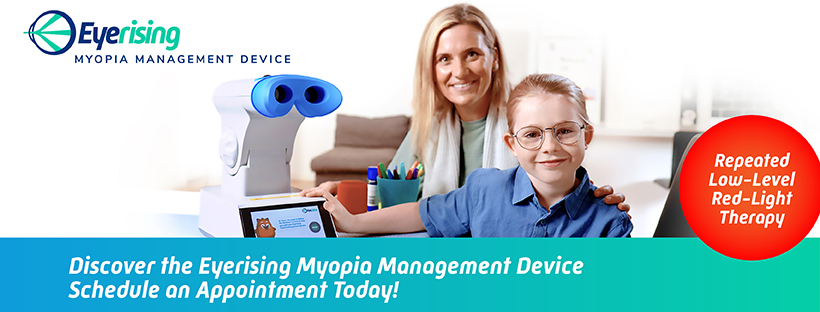Repeated low-level red light (RLRL) therapy is a patented, MHRA/CE registered medical device to slow the progression of myopia. It was developed by a leading Australian med-tech company lead by Ophthalmology academics & researchers. As myopia becomes more common in younger age groups there is a corresponding risk of eye disease later in life and its associated economic impact on these individuals. If your child has myopia, it is important that you consider the treatment options available and their effectiveness in slowing down myopia progression. The Eyerising RLRL device has been proven in published trials to be effective in myopia treatment and slowing myopia progression up to 87.7%.
How often does my child need to use the device?
The child needs to use the device TWICE a day, 5 days a week, which means 10 times a week. It is really important to follow this guidance. Our clinical trial showed that higher compliance rate means higher efficiency results. When the compliance rate is more than 75%, the control efficiency is about 90%.
Does my child need to use the device at the same time each day or same days each week?
No, your child can use the device anytime during the day and any 5 days during the week. But to remember, there is at least 4 hours gap between two sessions on the same day. And we recommend using the device from Monday to Friday and taking the weekends off. In this way, it is easier to fit the treatment into their school schedule (once before school and once after school) and form a habit.
As a parent, what can I do to help my child to achieve the best treatment result?
- Better compliance means better treatment results. As parents, it is important to have company and encouragement at the beginning to help your child to form a habit to use the device according to the guidance.
- For the first week, we recommend parents to record the duration of the afterimages each time after each session. If the afterimage is longer than 5 minutes, please contact the clinician.
- We recommend you to get your child’s eyes checked at 1 month, 3 months, 6 months and every 6 months after to monitor the progression of the short-sightedness.
What does my child need to do during the treatment session?
Make sure your child takes off the glasses (single vision glasses, specially designed glasses or contact lenses) during the treatment session.
It is also mandatory to keep the eyes open during the 3-minute session. But your child can blink the eyes as normal.
To achieve good treatment results, the parent should help the child to adjust the interpupillary distance and make the two red dots merge into one dot. If it is not possible, make sure the red light achieves the brightest level.
Does my child still need to wear glasses?
Yes, your child needs to wear glasses to get corrected vision. Studies have shown that children are more likely to have a higher myopia progression rate when the vision is uncorrected.
How many years does my child need to use the device?
The goal of myopia management is to control or stabilise the progression (axial length elongation) and prevent to develop into high myopia. It depends on the age of your child. For younger children, they may need RLRL therapy for a longer time. For teenagers, it will be a shorter time. As they are becoming adults, the progression is slower naturally as well. We recommend to start the therapy for 2 years and decide if your child needs further treatment afterwards. The life service of the device is 5 years.
Can RLRL combine with other short-sightedness treatments?
Yes, RLRL can combine with Orthokeratology lenses, soft contact lenses (like MiSight ) and specially designed glasses( i.e. Hoya Miyosmart). But RLRL cannot use with atropine. So please make sure your child stops using atropine for 2 weeks and then starts the RLRL therapy.
What happens if my child stops using RLRL therapy?
Once stops using the device, we recommend to get your child’s eyes checked routinely (every 6 months). From our clinical trial results, your child’s eyes will progress naturally. It depends on your child’s age, lifestyles and other multi-factors. Based on the routine check-up results, your child may require a longer period of RLRL treatment or other treatment, like low-dose atropine.
What are the side effects of RLRL?
The common discomfort we observed is an after image, which means the child can still see the red light after the treatment. But it will disappear within 3 minutes. We recommend the child close the eyes for 1 to 3 minutes after the treatments to avoid visual disturbances. With longer treatment, the duration of afterimage will get shorter and eventually disappear. If the afterimage is longer than 5 minutes, please stop using the device and contact the clinician for further advice.
What happens if the device is broken?
Please submit an inquiry on the customer portal, our team will contact you as soon as possible.
What happens if we have to travel and cannot bring the device with us?
If it is a short period of time (within one week). It is ok to skip a few sessions and go back to the routine after coming back home. But for a longer period, we recommend you bring the device with you. The device is very light and portal. It comes with a special package and great protection. It is like a small-size luggage that you can easily travel with.

